
born in 1962, bregenz, austria. stefan sagmeister studied graphic design at the university of applied arts in vienna. in 1987 he moved to new york to attended pratt institute on a fulbright scholarship. he then returned to austria in 1990 for community service as an alternative to obligatory military conscription. at the age 29, he attained a job with leo burnett hong kong. in 1993 he returned to new york to work for the hungarian graphic designer tibor kalman at M&Co. when the studio closed the same year, sagmeister opened his own office ‘sagmeister inc’. in 1994 he was nominated for a grammy award for his album cover - 'h. p. zinker mountains of madness’. in the following years he designed album packaging for artists such as david byrne, lou reed and the rolling stones. in 1996 sagmeister began developed posters for AIGA -american institue of graphic arts- he took a ‘year out’ in 1999, closing his studio to commercial work and concentrating on his own experimental projects. in 2001 released the book ‘made you look (another self-indulgent design monograph)’. in 2005 he won a grammy award as art director of the ‘once in a lifetime’ talking heads boxed set packaging. currently among many projects sagmeister continues his work on ‘20 things in my life I have learned so far.’ a series of typographic pieces inspired by the work of his grandfather that he began in 2004.
what is the best moment of the day?in the early evening and the early morning.
when talking about design Iwould say the morning because
it's quiet in here (his office) and there is then time to really
think about concepts. the evening because then most of the
day is over and so it's a more playful time, specifically when
all the tasks are done.
much of your work is related to music...I have always been interested in music
although now a diminishing part of my life.
growing older (I'm 43 now) I can say that looking back
music was much more important to me when I was 23.
what kind of music do you listen to at the moment?what you just heard there (music playing in the office)
is 'cat power' we've been listening to her extensively
recently.
do you always like the music of the bands you work with?we always try not to have to work with musicians or
any other clients who we don't like. there is absolutely
no excuse to work with ass-holes.
do you listen to the radio?I used to love listening to the radio when I was in austria
but here (NY) much less. the level of advertising between
songs drives me nuts. I haven't been very diligently looking
for stations lately. we have a new intern every three months
and we always ask them to bring with them their favorite music,
so there is quite a little bit of vocation going on.
what books do you have on your bedside table?I just finished 'the brooklyn follies' by paul auster which I loved.
last week I read a picasso biography and I have just started
'the last true story I'll ever tell' by john crawford, it's an
account of a soldier in iraq. for pleasure I read fiction,
non-fiction really whatever comes my way.
do you read design magazines?the studio has subscriptions to a number of them,
and I flick through them usually for pleasure not for
inspiration, and not usually in office hours.
where do you get news from? newspapers? TV?not from TV, I cant stand TV news in america,
I read the new york times, which I find a good newspaper
although it is slanted towards one direction.
it's probably my prime news-source.
do you notice how women are dressing?I do now much more than I used 10 years ago
because my girlfriend is a fashion designer. now I notice
things here and there. she's influenced how I dress for sure
(heavily), and she has given me more of an eye for things.
do you have any preferences?also through her influence, simple grounded ideas.
what kind of clothes do you avoid wearing?basically anything that isn't made by my girlfriend,
or isn't sold by my brother. he also has a men’s fashion
store. so between the two of them I would say 95%
of what I wear comes from either of them.
do you have any pets?no I don't, when I was very, very young I had a turtle.
when you were a child, did you want
to become a designer?not as a child but as an adolescent, when I was around
15 or 16 I knew that I wanted to become a designer.
where do you work on your designs and projects?everywhere, obviously the execution of them mostly in the
office. the conception of them everywhere, I travel quite a bit
and now I find it easy to work on a plane and I love to work
in a hotel room. I love to work in new fresh surroundings,
a new country...also i prefer working on concepts that don't
have a deadline attached where I can work freely.
do you discuss your work with other graphic designers?we have a group called 'second tuesday' and we meet every
second month. there are about 15 people who run design firms.
we always meet at someone's home or studio, that person has
to organize dinner and a subject. sometimes these subjects are
quite practical such as finances. lately the topics have been
focused more towards administration and business rather than
cultural aspects.
please describe your style,
as a good friend of yours would.for a long time we prided ourselves not to have a style
which to uphold became impossible. this is because if you
really switch your stylistic approach from project to project
it is impossible to come up with a new one on a weekly or
monthly basis, without ripping-off either historical styles or a
particular designers' style. although it would not cover all of
our work I would say we are probably best known for our
hand-made quality.
... and 'style = fart'?yes i said this but I had to give up. it was the headline of
a theory that style and stylistic questions are just hot air
and meaningless. I discovered that this is simply not true.
through experience I found that if you have content that is
worthwhile the properexpression of that content, in terms of
form and style is actually very important. it can be a very
useful tool to communicate that content.
I don't think that it is actually hot-air anymore.
which type of project has given you the most satisfaction?well the cop-out answer would be projects for good clients
who have good products or good services. that could be
CD packaging for a band that I love or for people who are kind
or a pleasure to work with, or smarter than me so I can learn
something. projects where I have the guts to work on them
hard enough so that they become good in my eyes,
they always tend to be more rewarding than the ones where
I was lazy.
who would you like to design something for?a person who I have always wanted to and tried to work with
is the guitarist 'robert fripp' from the band 'king crimson'
because it is a band that I have admired since I was 16.
as far as a particular product is concerned I would love to do
something ‘big’ and with a big impact in terms of its distribution.
I would love to re-design the coke can, or an identity that is truly
‘worldwide’. I always felt that these type of jobs used to be done
very well by small design companies or single designers for
example IBM or coca-cola. in the last decades though these jobs
tend to have been done by larger branding consultancies.
they often have a very different agenda and in my eyes generally
do terrible jobs, though there are some exceptions. I think that
it's a pity that designers avoid this type of work in favor of more
obscure projects, because today how children learn what the
world looks like is determined by these type of jobs. so I would
love to be involved there. in a small studio though this type of
project rarely happens, big companies like working with other
big companies.
and your studio is small...we very purposefully remain small. we started in 1993 and
there would have been many opportunities to grow through the
nineties. other than not being involved with the size of branding
I definately think that a small studio only has advantages
(apart from not being involved with the branding projects).
to keep the studio small was actually advice i received from
tibor kalman.
is there any designer/ architect from the past
you appreciate a lot?my old boss, tibor kalman.
and those still working?many, we would be here forever if I were to list them all!
in industrial design I would say the 'dutch bunch',
marcel wanders etc. in graphics, especially in the USA I would
say rick valicenti, and in the UK mark farrow, but there are
many people.
do yo have any advice for the young?try to be a good person and work your ass off.
what are you afraid of regarding the future?hmm (thinks) not much, I wouldn't call myself a very
gutsy person but I can't say that I am scared of anything
regarding the future... not at all. I think that it's going to be fine.
humanity adapts to all kinds of situations, and right now I think
is a good time to be alive.
Some of Sagmeister's Works:
Life Instructions: Sagmeister's piece that I would like to base my artist's card off of...I was thinking of modifying it to Life Motos ... half in French and half in English...Just like me!




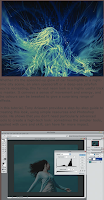
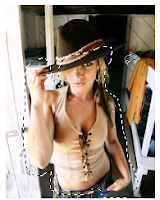
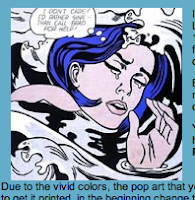


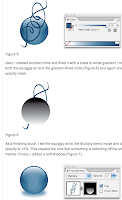















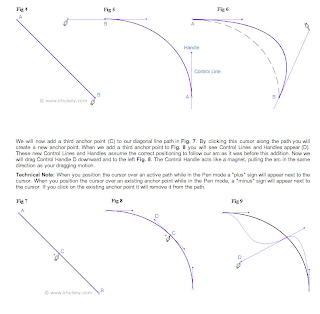






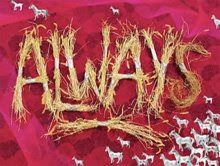

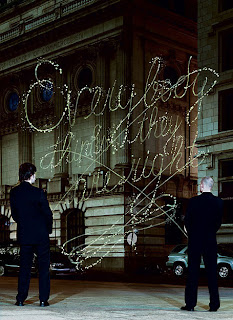














 Andreas Müller at Hahakid
Andreas Müller at Hahakid Taobot for the Omega Code Project
Taobot for the Omega Code Project Rebeliarts
Rebeliarts

